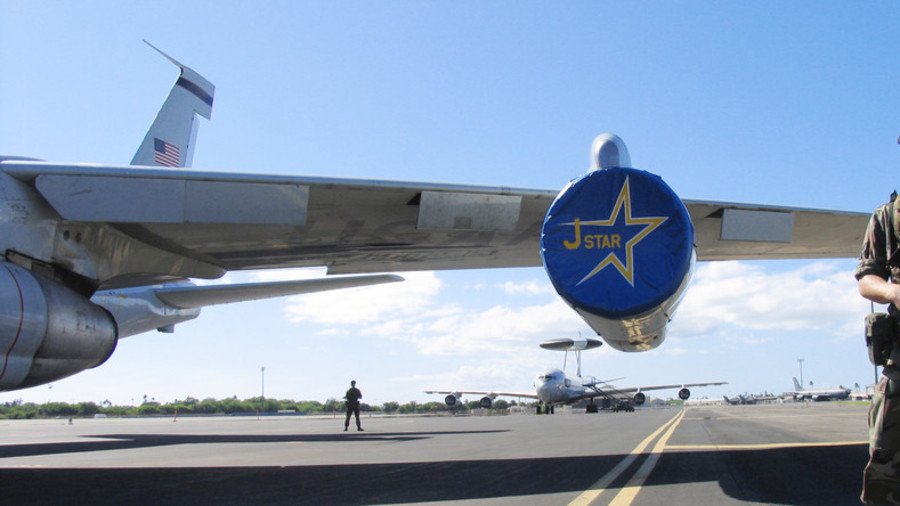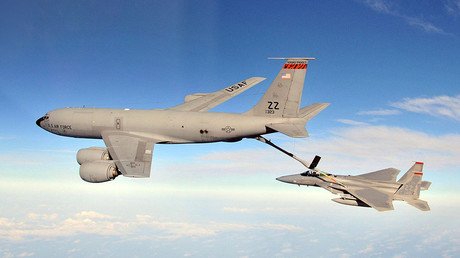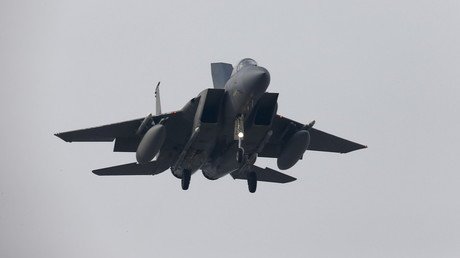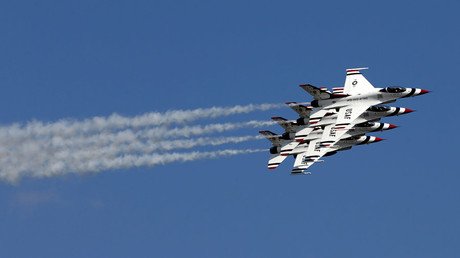Damage control: Exploding engine cripples US Air Force’s spy fleet

US Air Force has scrambled to repair its fleet of surveillance planes after a decades-old jet’s engine exploded and damaged a number of other aircraft at a busy airbase. Four airmen were also injured in the accident.
The Air Force’s Safety Investigation Board arrived at Warner Robins Air Force Base in Georgia on Thursday to begin a review of the December 19 incident.
According to the Air Force, an E-8C Joint Surveillance Target Attack Radar System (Joint STARS) aircraft experienced engine failure during a maintenance test run on a crowded ramp near the runway. Debris from the plane’s engine struck at least three other aircraft – grounding approximately one-third of the US Air Force’s ground surveillance fleet. The Air Force has sixteen JSTARS in its inventory, but only twelve are believed to be mission-capable at any given time.
Three of damaged E-8C planes returned to mission ready status on Sunday, and a fourth should be mission ready soon, according to a statement from the 116th Air Control Wing. Four airmen were also evaluated for injuries sustained during the accident.
“Personnel from the 461st and 116th Air Control Wings, who operate and maintain the Joint STARS fleet, worked day and night to restore three of the aircraft to mission ready status as well as clear debris jettisoned from the faulty engine off the ramp and parking areas. The fourth aircraft is expected to return to mission ready status after the holiday,” the air wing said.
Northrop Grumman’s JSTARS is a modified Boeing 707-300 that serves as an airborne surveillance and command and control platform. After decades of service, the Air Force is considering a plan to replace its aging JSTARS fleet with new aircraft, outfitted with a more advanced radar.
In March, an E-8C suffered water damage to its radar antenna and other electrical systems after Northrop Grumman maintenance contractors forgot to open up drain holes in the plane’s radar dome. The oversight ended up costing the Air Force $2 million in repairs.
Last year, the Air Force grounded four JSTARS aircraft after discovering quality control issues at a Northrop maintenance depot in Lake Charles, Louisiana.















